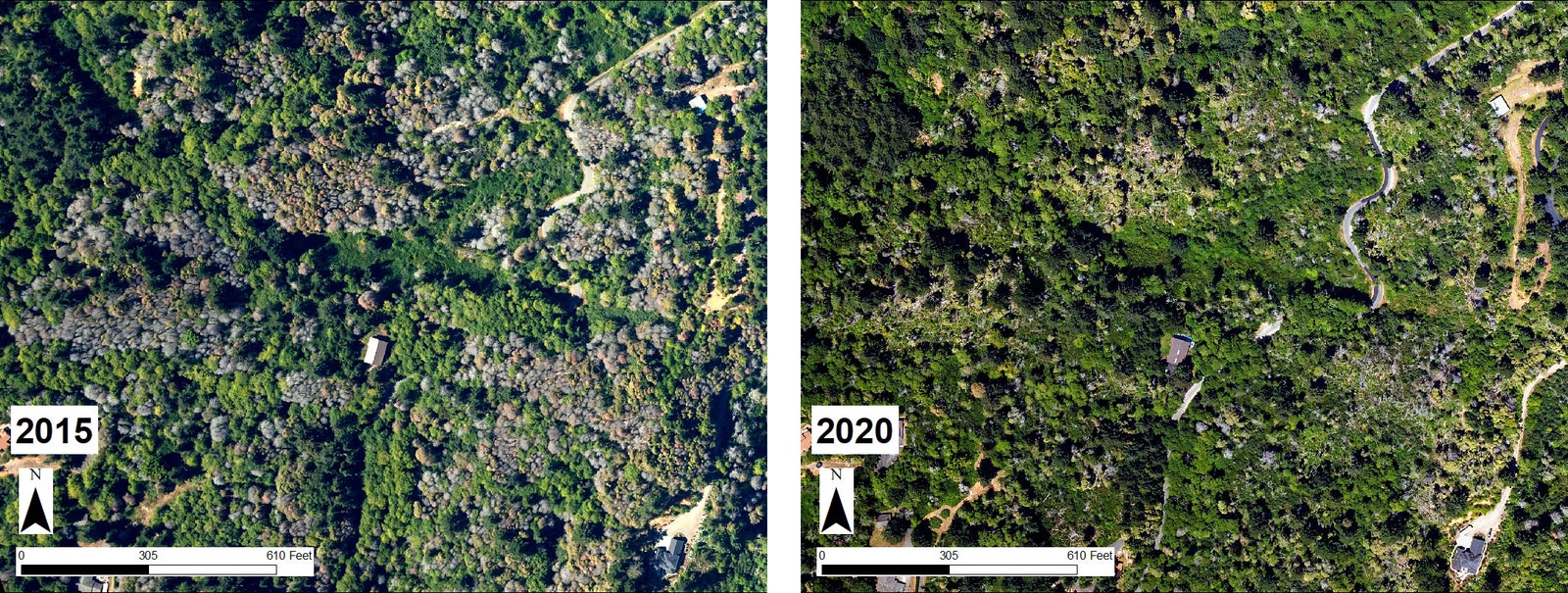With a fast response, they were able to keep it restricted to the “generally infested area,” an 89-square-mile tract of land where sudden oak death runs rampant. No one is allowed to move tanoaks in or out of this area. Conifer logs coming from the infested zone need to be cleaned of all debris and soil. Government reports have predicted that if the infested zone were to spread, Asian markets could sanction exported Oregon lumber. Officials regularly monitor Oregon nurseries for Phytophthora ramorum. Up until Peterson’s discovery in April, the pathogen was believed to be successfully contained.
Photograph: Oregon Department of Forestry
Peterson’s find was over 20 miles from the quarantine border, too far for spores to travel on their own. Analysis of the samples confirmed that the trees were infected with Phytophthora ramorum, but that wasn’t the only bad news: It was a new variant of the pathogen, “North American Two,” or “NA2,” (named for the continent where it was first isolated in a lab), that had previously only been detected in nurseries. That meant it was a new introduction—likely also from an imported nursery plant, though it hasn’t been confirmed—and a new, unpredictable version of the organism.
To Peterson, this was shocking, and most of all, disappointing. “The nursery industry, especially, has invested a lot of energy into monitoring for Phytophthora ramorum, and trying to prevent these outbreaks,” she says. But plant pathogens, like human viruses, are tiny, wily, and hard to defend against. The disease is “living in the soil, and there’s so much movement of plant material and soil between one location and another that this sort of stuff happens,” Peterson says. “It’s not that surprising that it eventually did.”
No one knows yet how NA2 will behave in a forest, though in some laboratory studies it appears more aggressive than NA1, the strain that’s now widespread. In a worst-case scenario, a more contagious strain could spread beyond tanoak to other species, possibly even the Douglas Fir and other commercially-important logging trees.
Dealing with this new battle front fell largely to Sarah Navarro, the sudden oak death pathologist. She and her team surveyed the infected area, finding that over 146 of the 186 tanoaks and wild rhododendrons they sampled tested positive. The NA2 infestation was much larger than they had originally thought.
They could have tried to clear and then compost the tanoaks, but that’s a slow, complicated process that leaves behind piles of logs that can be mistaken for firewood, creating opportunities for unwitting campers to accidentally transport infected logs. Navarro felt she had only one real option: Cut and burn. “It’s not the business I got into,” Navarro says. But it’s the best tool she has to try to slow the spread.



